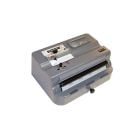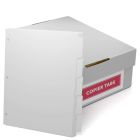Creating a Fundraising Cookbook For Your School
Creating and selling a cookbook is a great way for a school to raise funds. Here are some tips on how to get started.
Preparation:
You are going to need a number of volunteers in order to get this project completed. Ideally you should have a committee with two or three different departments. There should be one department that is in charge of gathering the recipes, one that is in charge of data entry, layout and design, and one that sells advertising in the book (optional) or that is in charge of deciding how the cookbook will be marketed once it is finished.
You can use the heads of these separate committees as a de facto steering committee as well, and together you can decide such things as: who you will want to contribute recipes to the cookbook (students or faculty and staff, or both), how large you would like the cookbook to be and how many you are going to print.
Some school cookbooks have recipes from every student and faculty member. This is always a great way to go, as you will be ensured full participation, and the more everyone feels involved, the more cookbooks you will sell, as your first line of attack when selling a fundraising cookbook is always the contributors themselves.
Gathering Your Material:
Once you have decided who you will include in your fundraising cookbook, the work of collecting the recipes begins. To do this, you will obviously need the cooperation of the teachers and faculty. Contact each teacher and explain the project if they haven't heard about it already (you may want to ask to speak at a faculty meeting just to give them a heads up), and set up times that you can visit each classroom.
You will then either want to hand out forms asking for favorite recipes, or conduct short interviews. For the younger children, it can be a lot of fun to do the latter. You can ask such questions as what their favorite food to cook is (even if it's cereal), how they cook it, etc. The answers can be pretty amusing and make a nice (if not terribly instructive) addition to your cookbook. The older students can put some more thought into it, and of course, the teachers and faculty will have the best contributions.
Organizing the Recipes:
There are a few ways to go about organizing your book. You can either go by class or by the type of dish (appetizers desserts, main dishes, etc.), or you can do a little of both. You can arrange the book by dishes and start with the teachers' recipes and work backwards to those of the kindergartners, or vice versa.
Make sure that your recipes have been proofread for grammatical and spelling errors (except those you are leaving in for comedic affect) before you go to print. Make sure your proofreaders are different from those who keyed the recipes into the computer.
Printing and Binding:
In order to cut costs, see of you can use the school's resources to print and bind the cookbook. If your school doesn't have a binding machine, consider purchasing one, as many models are quite inexpensive, easy for even beginners to use, and will usually save money over the cost of a printer.









